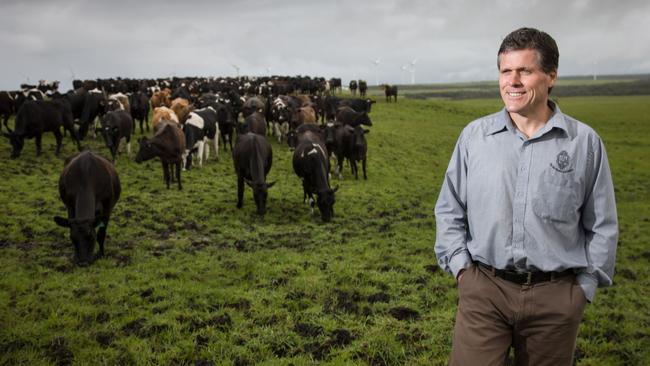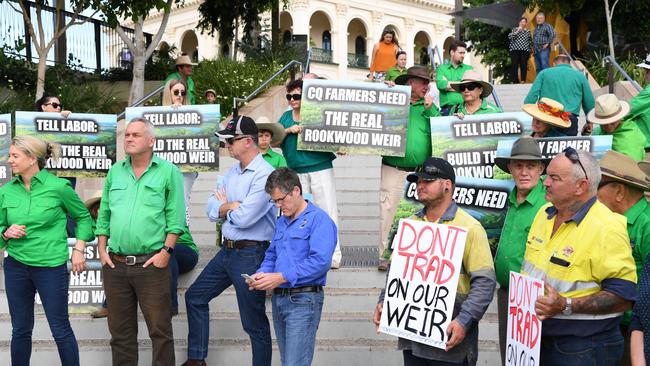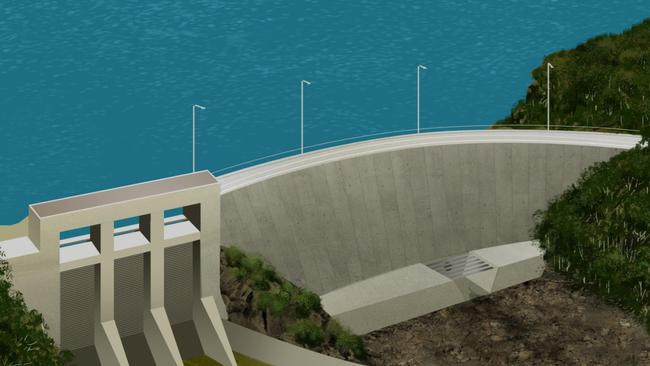Drought-hit Queensland regions left high and dry by lack of dam action by governments
It has been 15 years since Queensland’s last dam was build and as drought conditions persist across the state, so too do the political battles over funding.
QLD News
Don't miss out on the headlines from QLD News. Followed categories will be added to My News.
WHEN central Queensland farmer and grazier Colin Dunne heard about the original plans for the Rookwood Weir, west of Rockhampton, he started coming up with plans to increase output on his property Sorrell Hills.
Dunne runs cattle on dry land and has grown crops including corn, mung beans, sorghum, wheat and chickpeas when he can access enough water.
Sitting on the junction of the Mackenzie and Fitzroy rivers, the 2200 hectare property was at the tail end of the original plans for the Rookwood Weir — a water project that has been discussed for more than two decades.
“When the weir came along, I thought if the water was there, I could use it, depending on the cost,” he says.

But now the State Government has scaled back plans for the weir, blaming a $210 million blowout in cost of the $352 million project largely because of concrete prices and a funding dispute with Canberra.
Dunne doesn’t know what to believe but he says one thing is for certain — the option of him trying to access the water won’t be there. It will be too far from his property.
The battle over Rookwood Weir is not unique. Queensland’s recent history of regional dam building is one of changes, delays and broken promises.
The last major water infrastructure project dam built in the state, Paradise Dam, was completed in 2005.

Since, then a controversial plan pushed by the Beattie government to dam the Mary River at Traveston Crossing near Gympie had to be abandoned after it was overruled by then federal environment minister Peter Garrett in 2009 because of its impact on threatened species.
Around the same time, Mr Beattie pledged the Rookwood Weir would be built by 2011.
The project has since gone through repeated changes.
Both the federal and state governments committed and recommitted to provide portions of the funding but have clashed at each step of the way.
Even without taking account of the funding disputes, the project has not been without controversy.
In July last year, Infrastructure Australia warned the costs were likely to exceed benefits and that the weir would deliver more water than needed.
This month, the State Government released expressions of interest on a reduced-capacity weir.
Farmers fears the capacity will be slashed from 76,000ML to 54,000ML a year.
Full hydrological modelling is yet to be completed but Queensland’s Natural Resources Minister Anthony Lynham says it could yield up to 72,000ML a year with farmers to get up to 38,000ML.
The dispute has infuriated farmers around Rockhampton.

“There is no questioning the value of water, especially now. It is dust-bowl dry out here,” AgForce chief Mike Guerin says.
“The people of central Queensland, who were not consulted before the Government decided to reduce the capacity of Rookwood Weir, are rightly worried about the impact on their livelihoods and their communities.”
The future of the project, which sits in marginal state and federal seats, has become a symbol of a political contest over the bush.

Queensland Opposition Leader Deb Frecklington says the changes to the project show the Government is ignoring the needs of the regions.
“Labor’s watering down of Rookwood Weir will mean less jobs for central Queensland,” Frecklington says.
“Labor haven’t reduced the length of Cross River Rail because of concrete costs and they shouldn’t only be building part of the weir.”
But Lynham says the Government is building Rookwood but has to manage the increased costs.
“There is no questioning that we asked the Commonwealth for money towards increasing costs and they refused,” he says.
“The result is that we are getting on with the job building the weir on budget and on time.
“We makes no apologies for practising due diligence before committing to water infrastructure projects.”

The project is likely to tip into campaigns in other parts of the state, with pressure from the Greens to block new dams.
“Rookwood Weir is the most expensive water supply option for this region,” Greens MP Michael Berkman says.
“I think this is an excuse for governments to throw some dollars around for big concrete projects that won’t actually fix the real problems.”
A MATTER OF URGENCY
The clash over Rookwood is just one of several growing disputes over how to secure water that has been given greater urgency by the long-running drought.
Meanwhile, the last dam to be built — Paradise near Bundaberg — is having water released and faces lowering of the spillway by five metres amid warnings about safety.
Local farmers who have planted crops such as macadamias and avocados, which take several years to mature, now fear they will not have access to the water they need.
As large parts of the state continue to struggle through drought conditions, the decision to slash the capacity of Rookwood Weir and lower the height of Paradise Dam, the state’s water supplies are diminishing even as more dams are being built.
Federal LNP MP Keith Pitt, whose electorate takes in Paradise Dam, this week proposed a radical solution that would involve the Commonwealth take over responsibility for water infrastructure from the states.
This position is not supported by Pitt’s own government but it is a sign of the frustration in his community.

The LNP says it will fast-track the Nullinga Dam in the Atherton Tableland, Urannah Dam northwest of Mackay and raising the Burdekin Falls Dam by two metres to increase the storage capacity used to supply Townsville.
Frecklington has also vowed to introduce a new Queensland Dam Company to oversee new dam construction. Lynham dismisses this as a level of bureaucracy that it not needed.
The State Government has announced $13.6 million for Emu Swamp Dam in southeast Queensland, which also has funding from the Commonwealth and farmers.
But in a sign of the dire state in the Darling Downs, taxpayers will soon fund water being trucked into Stanthorpe for drinking supplies.
The Palaszczuk government has backed a detailed business case for raising the Burdekin Falls Dam and has given the green light to a federal plan to further assess another long-talked about dam in northern Australia, Hell’s Gate.
Robbie Katter is backing several dam proposals in his vast north Queensland electorate between Cloncurry and Hughenden, including Hells Gate. But he is dismissive of another project backed by the LNP, Nullinga Dam, because he claims it would compete with Cairns’ urban water supply and the same benefit could be provided more efficiently with the smaller North Johnstone Transfer, which would use 10km channel to divert flood water. “It is do or die for places like Cloncurry,” he says.
Some of these schemes are being pushed by advocates of the widely discredited Bradfield Scheme, which was a plan from 1938 to redirect rivers from northern Australia to the south. But as the state grapples with persistent drought, ambitious ideas may carry some electoral appeal.

The question for producers like Mario and Leanne Gangemi of Ballandean Estates Winery is whether these plans will ever eventuate.
“We got 5ml yesterday, it’s the most we’ve had in one day since January,” Leeanne says.
“We have hope, but it is still so frustrating not knowing when the water will come.”
steven.scott@news.com.au
Originally published as Drought-hit Queensland regions left high and dry by lack of dam action by governments
